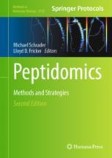Search
Search Results
-
Role of Neurotransmitters and Neuropeptides in Breast Cancer Metastasis
Abstract —Having various pathological and molecular subtypes with several causes, breast cancer is the most prevalent malignancy amongst women....

-
Analysis of Molecular Circuitry Integrated to Lethargus State of Caenorhabditis elegans: A Review
Sleep is a quintessential phenomenon of our nervous system. In spite of enduring research, the complexity of brain makes it more challenging to...

-
Melanopsin-mediated optical entrainment regulates circadian rhythms in vertebrates
Melanopsin (OPN4) is a light-sensitive protein that plays a vital role in the regulation of circadian rhythms and other nonvisual functions. Current...

-
Neurochemical Anatomy of the Mammalian Carotid Body
Carotid body (CB) glomus cells in most mammals, including humans, contain a broad diversity of classical neurotransmitters, neuropeptides and gaseous...
-
Role of Thymoquinone on sleep restriction and its mitigating effect on leptin-mediated signaling pathway in rat brain
BackgroundSleep and stress interact bidirectionally by acting on brain circuits that affect metabolism. Sleep and its alterations have impact on...

-
Eosinophil extracellular traps drive asthma progression through neuro-immune signals
Eosinophilic inflammation is a feature of allergic asthma. Despite mounting evidence showing that chromatin filaments released from neutrophils...

-
Molecular Mechanisms of Photoperiodism
This chapter closely focuses on the molecular elements involved in each physiological module in photoperiodism, i.e., photoreceptors, a photoperiodic...
-
The Role of Ventromedial Hypothalamus Receptors in the Central Regulation of Food Intake
AbstractHypothalamus is the most critical center in the brain for regulation of food intake. Hypothalamus performs this function through special...

-
Structure and Physiology of the Neuropeptidergic System of Triatomines
In insects, neuropeptides can act as hormones and neurotransmitters, exerting their physiological roles by activating membrane protein receptors....
-
Bioinformatic Prohormone Discovery in Basal Metazoans: Insights from Trichoplax
Experimental discovery of neuropeptides and peptide hormones is a long and tedious task. Mining the genomic and transcriptomic sequence data with...
-
The Important Role of Systems Biology in Neuroscience and Neurology and Its Associated Diseases
Neurodegenerative diseases are a huge global health concern in the Western world due to our ageing population and other factors. Research into these...
-
Brief History of Ctenophora
Ctenophores are the descendants of the earliest surviving lineage of ancestral metazoans, predating the branch leading to sponges (Ctenophore-first...
-
Two Different Strategies for Stabilization of Brain Tissue and Extraction of Neuropeptides
Neuropeptides are bioactive peptides that are synthesized and secreted by neurons in signaling pathways in the brain. Peptides and proteins are...
-
Neurocircuitry of Circadian Clocks
Classical studies using several insect species have demonstrated that the principal circadian clock cells that generate circadian oscillations and...
-
Identification and Targeted Quantification of Endogenous Neuropeptides in the Nematode Caenorhabditis elegans Using Mass Spectrometry
The nematode Caenorhabditis elegans lends itself as an excellent model organism for peptidomics studies. Its ease of cultivation and quick generation...
-
Profiling Human Cerebrospinal Fluid (CSF) Endogenous Peptidome in Alzheimer’s Disease
Human cerebrospinal fluid (CSF) is a rich source for central nervous systemNervous systems (CNS)-related disease biomarker discovery due to its...
-
The metabolic and functional roles of sensory nerves in adipose tissues
Homeostatic regulation of adipose tissue is critical for the maintenance of energy balance and whole-body metabolism. The peripheral nervous system...

-
Glutamate and GABA Receptors of Nerveless Animals (Placozoa): Preadaptation to Neurotransmission
Abstract —The emergence of the nervous system is one of the most important events in the evolution of life on Earth. The details of this event remain...

-
The role of central neurotransmitters in appetite regulation of broilers and layers: similarities and differences
The importance of feeding as a vital physiological function, on the one hand, and the spread of complications induced by its disorder in humans and...

-
Neural mechanism of circadian clock-based photoperiodism in insects and snails
The photoperiodic mechanism distinguishes between long and short days, and the circadian clock system is involved in this process. Although the...

